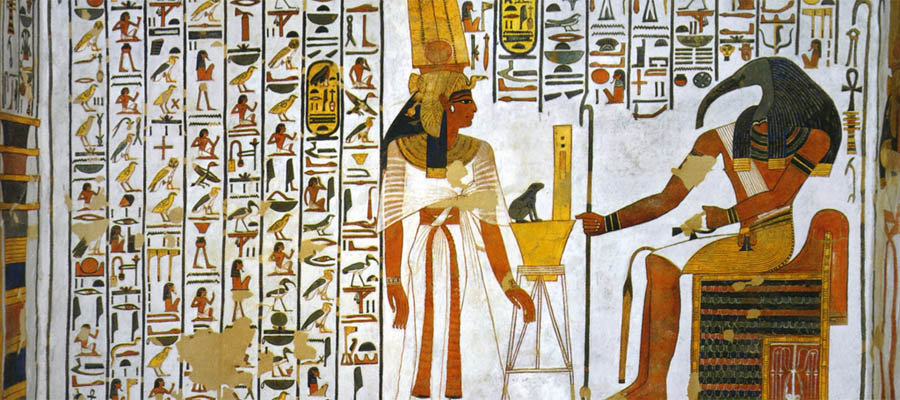This narrative tells a story of the wife of Ramessess II, Queen Nefertari, the goddess of fertility, Goddess Heqet, with a roll up papyrus named “Nefertari” and the god of writing and wisdom, God Thoth. It is carved out from stone walls. Line is used throughout the art, for texture, illustrating important parts, and separating the image from the background. The figures and shapes are flat. The physical texture and patterns gives a little sense of depth in the painting; but without any shading, the painting is bland. The pigment in the colours are neutral with earth tones. There is rhythm on the clothing and some symbols are repeated. The negative spaces, carved out by line, between the elements shows space.This painting is unbalanced and uncomfortable; it is disjunctive and the figures are in an awkward stance. In this image the viewer can see the conversation between the three. Emanating the respect and importance of each individual This painting is located on the north wall of the Tomb of Nefertari, Thebes, Egypt. This painting is as tall and width as the north wall it is painted on. The cave, with the painting, is was discovered in 1904 by Ernesto Schiaparelli The tomb of Nefertari was made around 1224 BC in the Egypt’s Valley of queens, This painting on the cave walls is a decoration in the queen’s chamber. The hieroglyphics around the image is Chapter 94 of the “Book of the Dead”.
